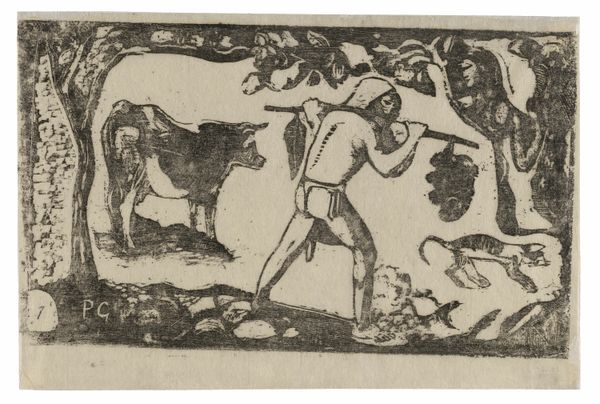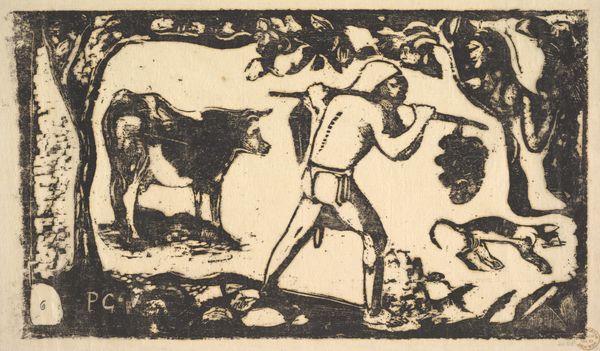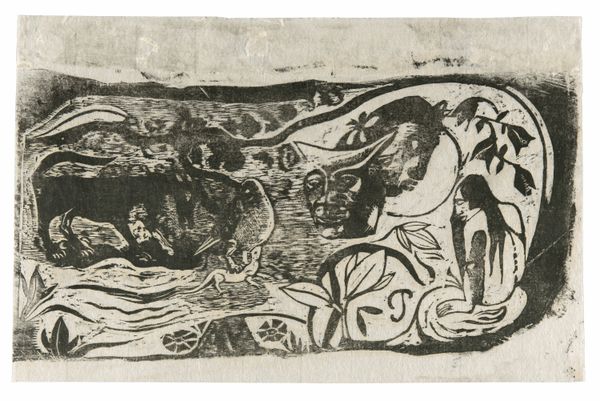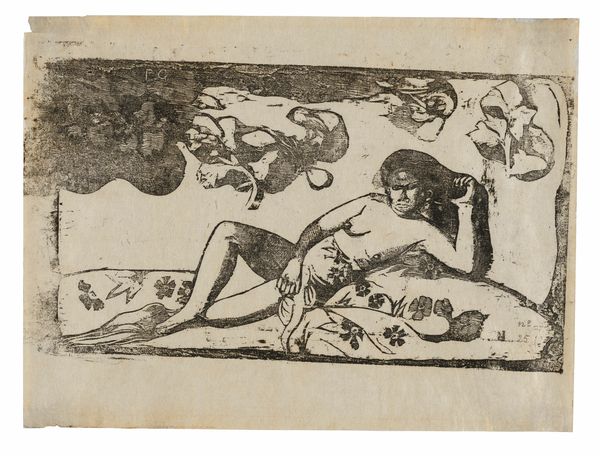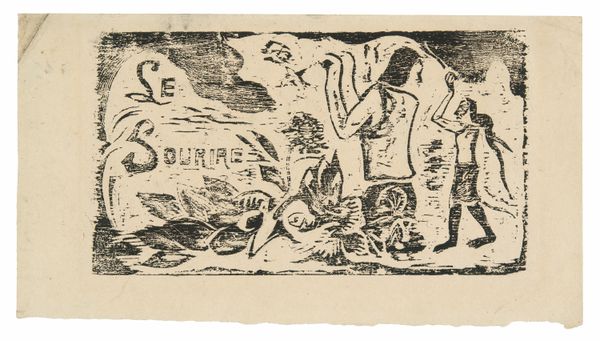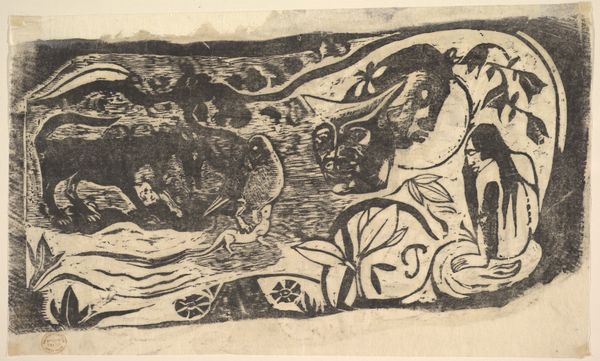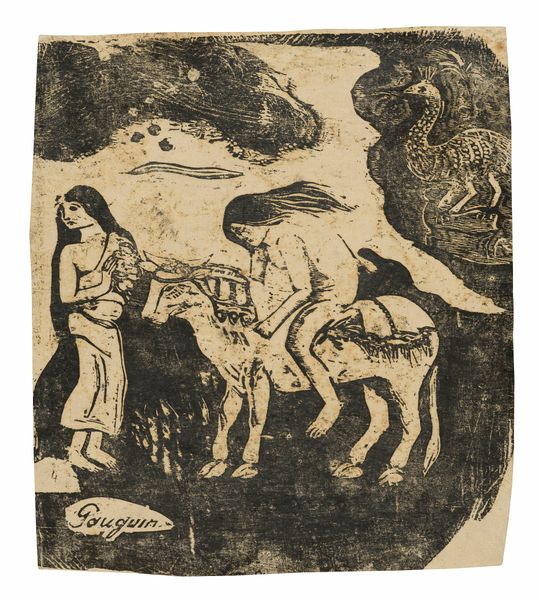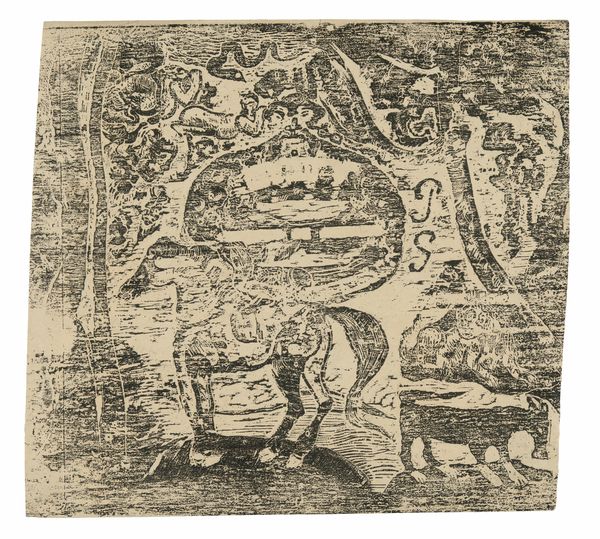
Tahitian Carrying Bananas, from the Suite of Late Wood-Block Prints 1898 - 1899
0:00
0:00
Dimensions: 162 × 285 mm (image); 211 × 304 mm (sheet)
Copyright: Public Domain
Editor: So, here we have Gauguin’s “Tahitian Carrying Bananas” from 1898-1899, a woodcut print. I find the stark contrast of the black ink against the paper creates a really compelling and somewhat unsettling feeling. How do you interpret this work? Curator: Gauguin is indeed evoking strong sensations. I see a profound yearning for a return to a primal state, one where the symbolic language is embedded within the earth and everyday acts like carrying bananas. Notice how the figure isn't just holding fruit; they carry a burden and a gift – representing sustenance but also a potential for a fall, mirroring images of paradise and loss that reappear across cultures. What emotional resonances does this primal vision spark for you? Editor: The "fall" that you mention makes me think about temptation and Western projections onto Tahiti at the time. Is Gauguin embracing or critiquing that idea? Curator: Precisely! Gauguin masterfully uses familiar images, the serpent-like dog perhaps hinting at temptation, the ambiguous faces within the trees allude to a deeper, almost subconscious narrative. He utilizes these cultural echoes to create his personal mythology, a reimagining of Tahitian life filtered through his own artistic vision, asking if innocence is truly retrievable or just a phantom of Western imagination. Do you see any other loaded images that invite a second look? Editor: The figure’s almost statuesque pose seems to represent this mythologizing too. It all makes you question what Gauguin's true intentions were here. Curator: And that questioning is precisely the point! This woodcut holds a conversation with our collective unconscious, filled with projections, assumptions, and yearnings for a world perhaps more imagined than real. Editor: It’s incredible how such a seemingly simple image can hold so many layers of meaning. Thanks for shedding light on the symbols at play. Curator: My pleasure. By decoding images we discover the ongoing dialogue between ourselves, culture, and history.
Comments
No comments
Be the first to comment and join the conversation on the ultimate creative platform.
